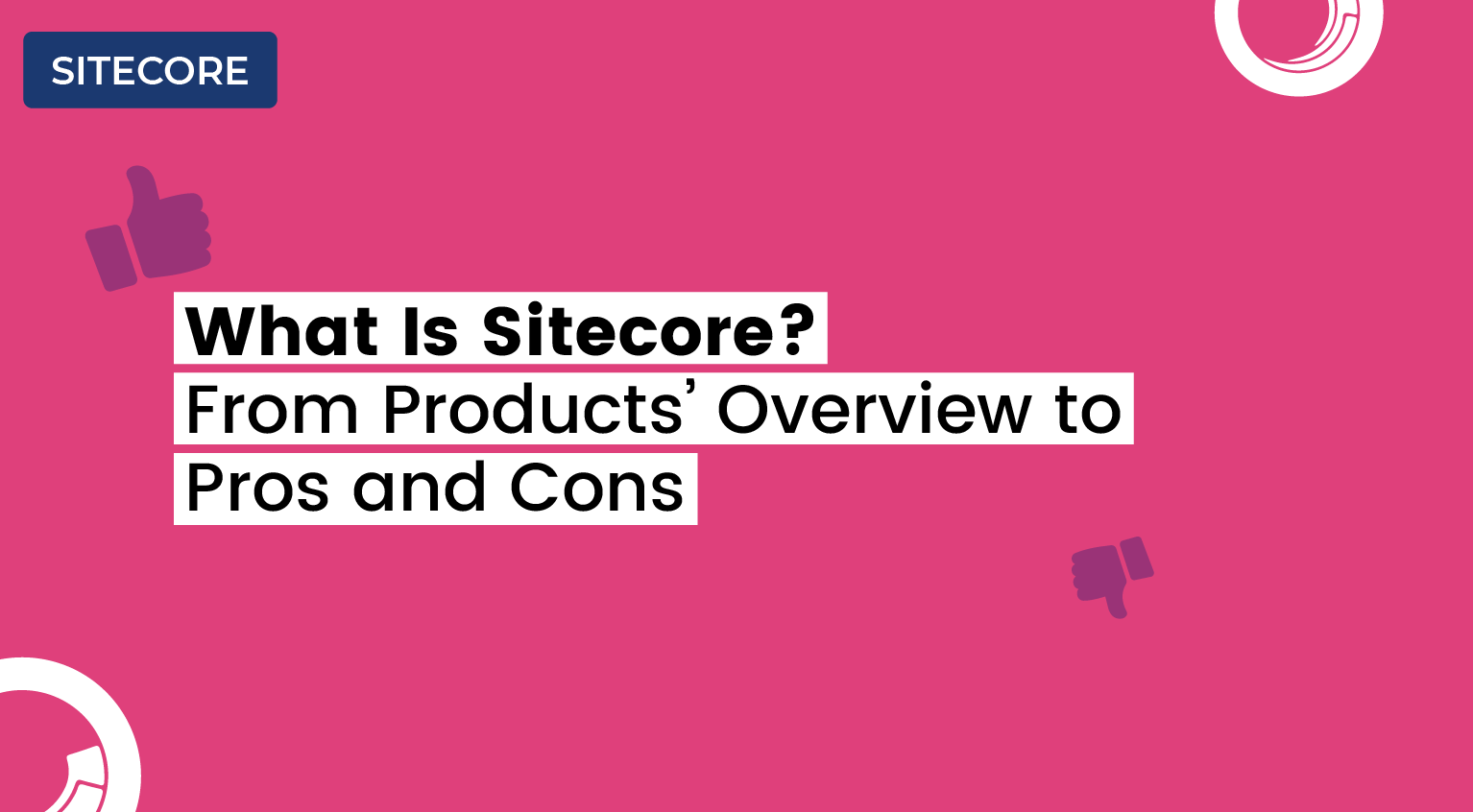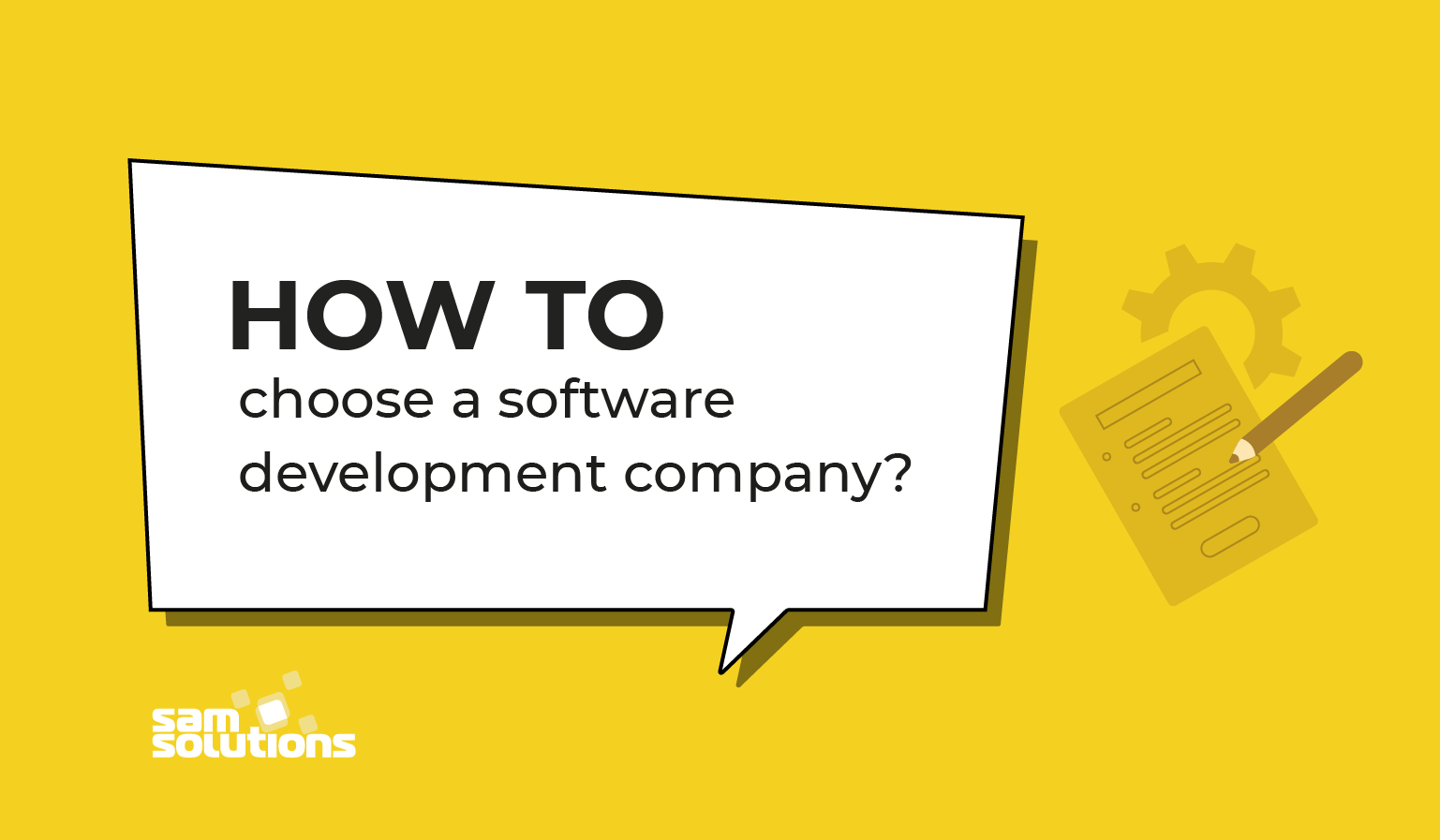In the digital age of the 21st century, companies have advantages that their predecessors could have only hoped to have. Among them is access to some of the most talented IT professionals, analysts, developers, and engineers in the world—a true asset when one considers the lightning pace at which technology evolves in this landscape. As a result, more companies than ever before are seizing the advantages of outsourcing software development services.
While many businesses choose to outsource IT services of all types in addition to accounting, marketing, and more, business owners are outsourcing one IT function much more frequently than others—software development. In fact, in a survey conducted by Statista, 64% of respondents said they’d outsourced software development in a recent year, well above IT infrastructure, help desks, and even third-party data centers.
What Is Outsourcing in Software Development?
In general, outsourcing is the practice of selecting an external provider to assume control of a particular aspect of operations or projects. Ideally, this provider is highly qualified and supplies the talent, time, and resources needed to handle the project and assist the business in achieving its goals. In software development, outsourcing occurs when a company contracts a third-party firm to develop a software application for them, rather than using an internal team.
Many businesses choose to outsource software development when they lack current in-house staff with the particular skill set required by the project. Others utilize software outsourcing development services to optimize the time available and reach goals faster. However, many firms choose to outsource simply to access a pool of experts that can help them deliver the highest-quality customer experience possible.
Software Outsourcing Models
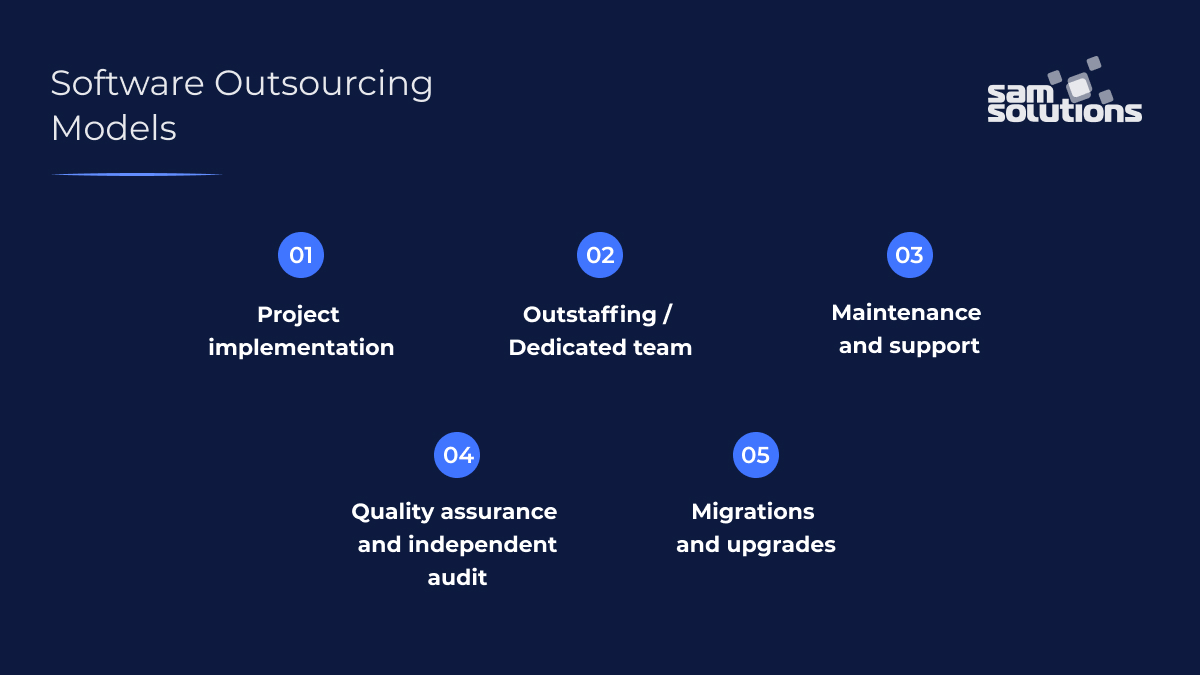
Since software outsourcing is a reasonably general term that applies any time an organization chooses a third-party programmer, it can take many different forms. Software outsourcing models commonly utilized include:
- Project implementation: This outsourcing model occurs when a programmer is contracted to implement a specific software project for a business or organization. For the most part, the programmer develops the new software, optimizes the existing servers and hardware to run it, and handles its implementation in the organization’s environment.
- Outstaffing: This outsourcing model involves remotely filling a position rather than an individual project. An outstaffer can work on a variety of software projects at once for the organization while fulfilling the same outstaffed role. The result is a steady, predictable outsourcing relationship.
- Dedicated Team: Outsourcing software development services can be a tricky path to navigate. Having a dedicated team of managed (and remote) software development and/or testing workers makes things a lot easier. Whatever outsourcing company you choose to hire, they will assemble a dedicated team that’s devoted to your project, as well as a project manager to oversee your project’s lifecycle. The general process when outsourcing software development services typically goes as follows:
- Project requirements are defined and sent to the outsourcing company.
- The outsourcing company will assemble their team and develop a product roadmap.
- The development/testing phase will commence, where you will be in direct and constant communication with the team.
- The project will be finalized and completed with the end result being a ready-to-market product.
Maintenance and support: Often, businesses need ongoing maintenance and support for new or existing software products. Engineers can modify the product to address faults that may arise after delivery or take action to enhance functionality and improve performance. Outsourcing software development services means that maintenance and support can be done remotely with much less friction (as well as during off-hours).
Quality assurance and independent audit: Organizations frequently outsource quality assurance and independent audits to a third-party provider. Functional testing, performance testing, and general source code quality auditing by an external provider have the advantage of occurring on an impartial basis. This impartiality inspires consumer confidence.
Migrations and upgrades: Similar to project implementation in that the programmer is on hand to ensure its successful implementation into the organization’s environment. Engineers can be present for one-time system migration or serial upgrades. With each set of changes, the programmer ensures the software interfaces well with other programs, hardware, and servers, and functions optimally.
Outsource Wisely
As we mentioned, many businesses and organizations choose to outsource software projects and positions due to the digital availability of software developers, engineers, and other experts. These professionals are accessible on a remote basis like never before and bring with them the opportunity to leverage expertise and experience in a more cost-efficient, flexible fashion than a traditional, in-house team.
However, it’s important to remember when outsourcing software development services, that every software project, outstaffing position, software migration, software upgrade, and QA project is different from one another as well.
Depending on the nature of the project and the platform, differing sets of benefits and risks are involved. As such, before determining whether a local, in-house team, or an outsourced software developer is best—and before deciding which outsourcing model to undertake—it’s crucial to consider the platforms in use. Doing so will help you determine the right type of outsourcing relationship for you.
Outsourcing Contract Models
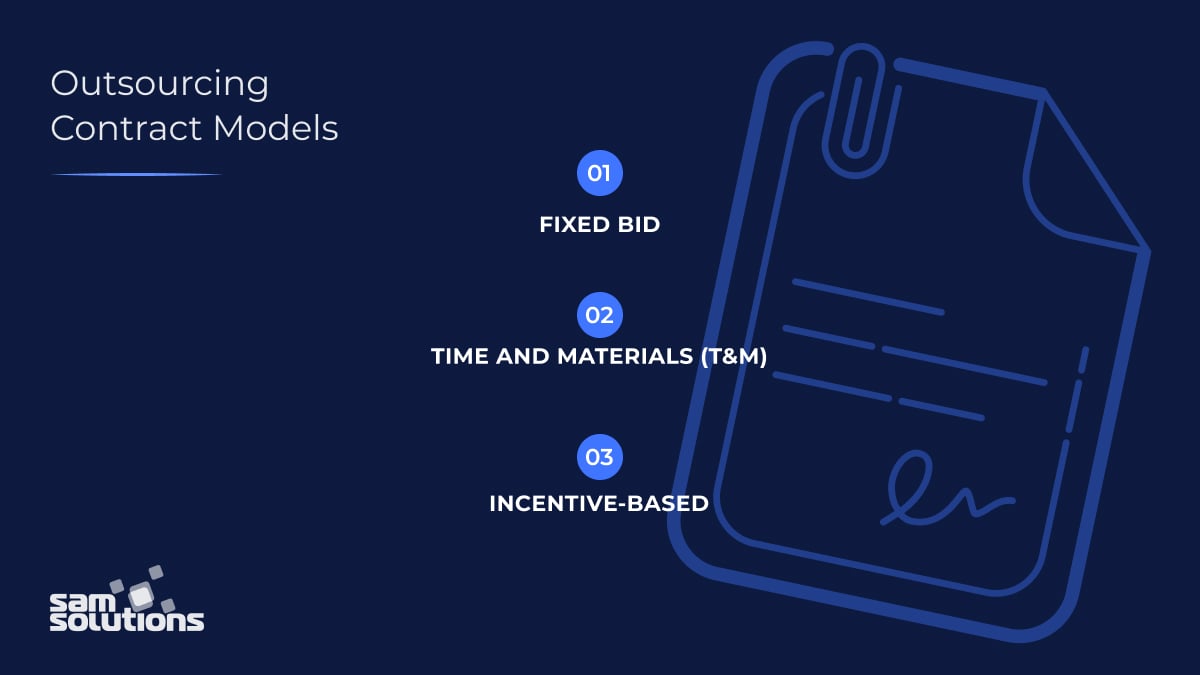
Part of outsourcing software development services is identifying which contract model is ideal for your particular project. Typically, organizations choose from these three major contract models:
- Fixed bid. A fixed bid contract is usually used for large-scale and green field implementations, and allows you to pay one price for software development; fixed bid contracts work well for waterfall-type projects as well as Agile-based, flexible projects with multiple unknowns. In most cases, you won’t pay until the work is completed or until significant milestones occur, placing the financial risk squarely on the partner. However, you’ll need to invest in formulating and checking a set of acceptance criteria for each deliverable item – this process may be challenging if you don’t have an experienced IT project manager on your team.
- Time and materials (T&M). By contrast, T&M contracts allow the contracting partner to bid based on the time and materials they’ll use throughout the project. While T&M projects can be cost-effective if you’ve thoroughly outlined the project, they can also result in costly delays and over-budget expenditures.
- Incentive-based. As an addition to one of the other two contract types, incentive-based contracts offer the partner a reward for meeting performance, time-based, or other goals. These contracts can help keep the partner motivated beyond the terms of the fixed bid or T&M contract. For example, you can institute a retainer where you pay for full time engagement of a certain team or experts; in return, you’ll receive a discount for your commitment to hiring a partner for a longer period of time.
Finding the Right Type of Partner

Just as there are multiple types of outsourcing projects and positions, there are numerous types of outsourcing solutions to fulfill them. If you’re considering outsourcing software development services, you’ll likely encounter three significant types of specific outsourcing, including:
- Onshore/local outsourcing. This type of outsourcing takes advantage of a local pool of talent, depending on your scope. While basing your outsourcing needs on your geographical location can provide the potential to build local relationships and can provide ease of communications, you may encounter higher prices and a smaller selection of available professionals.
- Nearshore outsourcing. Nearshoring involves finding an outsourcing partner in a country adjacent to or nearby your own. With nearshoring, communications are often just as simple as with local outsourcing partners and may come at a reduced cost.
- Offshore outsourcing. This type of outsourcing involves choosing the best outsourcing partner regardless of region, giving you access to a worldwide pool of talent and potentially lower costs. In most cases, offshoring partners are fluent in English and offer assistance in multiple time zones to ease communications. This is what people typically think of when they hear “outsourcing software development services.”
- Hybrid mode. Combining the benefits of local coverage for customer facing roles like project management, business analysis, and software architecture with offshore development and testing teams may be a much preferable way of outsourcing. You can still get the benefits of getting the best talent at a moderate budget plus mitigate the risks of managing remote teams, especially across multiple very distant locations and time zones.
Depending on your organization’s goals, one or all of these outsourcing options may prove advantageous.
You’ll also want to consider the current structure of your team and the particular outsourcing model that will best fit how you operate daily. For example, if you have a tight-knit team with little time to devote to working closely with outsourcing partners within your workplace, local outsourcing may not be for you.
You may want to consider a hybrid outsourcing mode. However, you may find that offshoring your software project allows you access to a world-class team of developers that can achieve your goals remotely, and fits your team structure much better. Outsourcing software development services is inherently flexible (which is one of its advantages).
Where Can You Find an Outsourcing Partner?
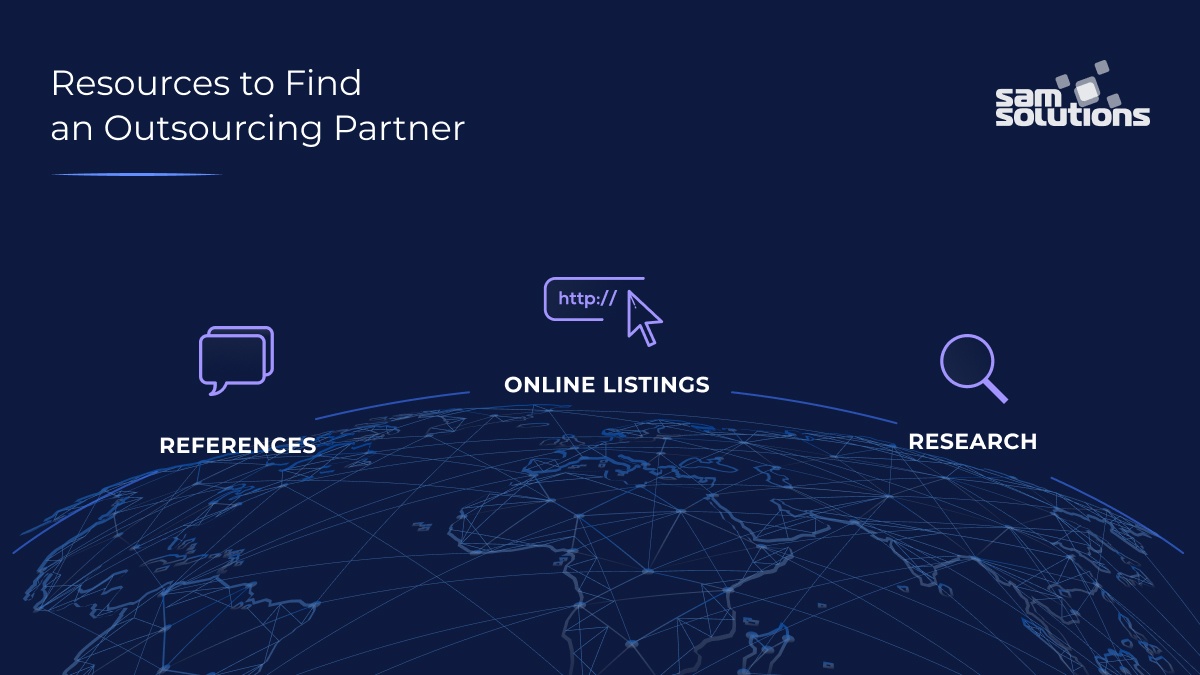
When you’re searching for an ideal outsourcing partner, it’s crucial to use multiple resources to identify potential partners that could meet your needs. Start with these top three resources when you begin your partner search:
- References. Seek references from business associates, friends, and other contacts, particularly if they’ve recently completed a project like yours. Personal references can help you narrow your search field to outsourcing partners that do quality work, and are experienced with projects within your scope of business.
- Online listings. Listing sites can provide you with more than just a partner name – often, these sites include background information about each potential partner, contact information, and even past projects. Some even provide a rating system so that you can get a general idea of a potential partner’s skill level, efficiency, and flexibility. Try listing websites like Clutch, Goodfirms, DesignRush and similar sites.
- Research. Performing your own research using search terms related to your particular project type and niche can help provide you with additional potential outsourcing partners. The first steps involved in outsourcing software development services involve delving into the backgrounds of each firm to determine if they’re a good fit for your project and business.
For best results, utilize all three of these methods to identify a potential partner with excellent reviews, a proven track record of handling projects like yours, and a work ethic that comes highly recommended from your business associates.
How to Select a Partner for Outsourcing Software Development Services
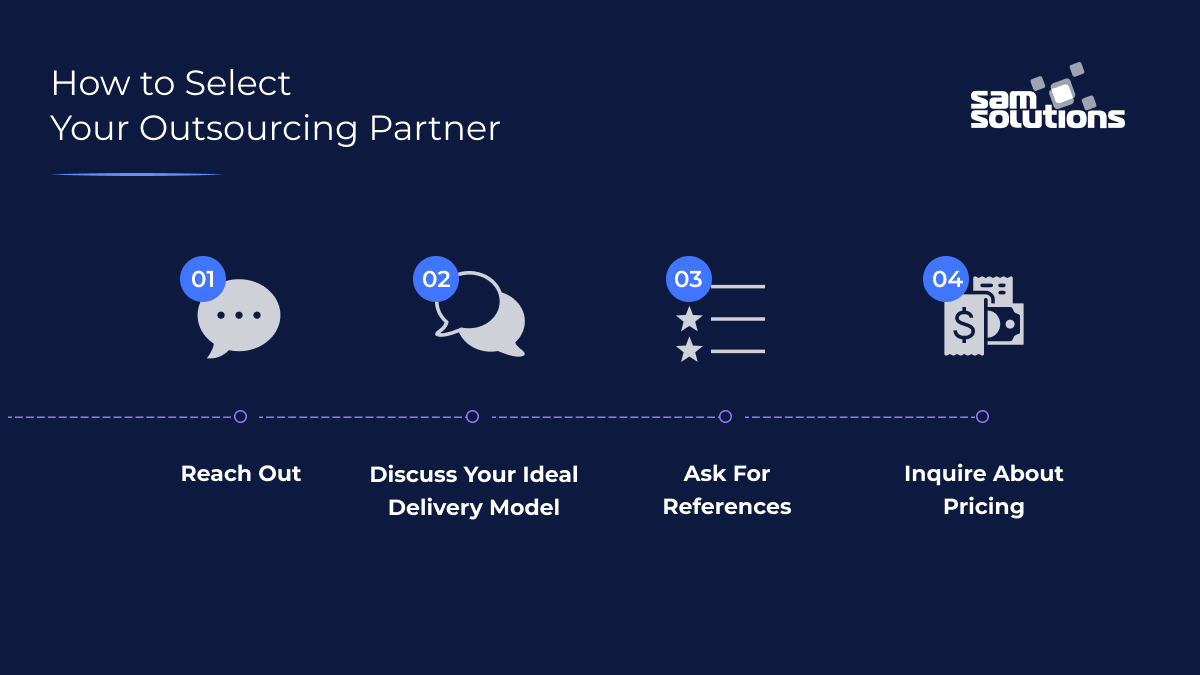
Once you have a short list of potential outsourcing partners you believe could be a good fit for your software project and your business model, you’ll need to make a final decision. Make an effort to communicate with each partner individually – building your knowledge about each potential firm can help you make a much more informed decision. Follow these steps to select the right software outsourcing partner:
- Reach out. Contact each partner and indicate your interest in a potential partnership. In addition, thoroughly outline your project during this step. Outsourcing software development services takes in-depth planning.
- Discuss your ideal delivery model. If your potential partner has representatives onshore in the country where you are running your project, you’ll need to specify which type of outsourcing model fits your needs.
- Ask for references. As mentioned, any reputable outsourcing partner should have a number of references that can speak to their skill, work ethic, and track record. Contact each reference provided to get a sense of each of these aspects of your partnership.
- Inquire about pricing. Depending on your project and the partner in question, you may encounter a number of different pricing models during your conversation. Ask for an estimate based on your pricing model and compare it with that of other potential partners.
- Negotiate. Finally, negotiate with your final candidates and choose the partner that most closely meets your organization’s software needs, price range, and culture. Remain firm regarding your needs, but understand that when outsourcing software development services, you often get what you pay for.
Lessons Learned
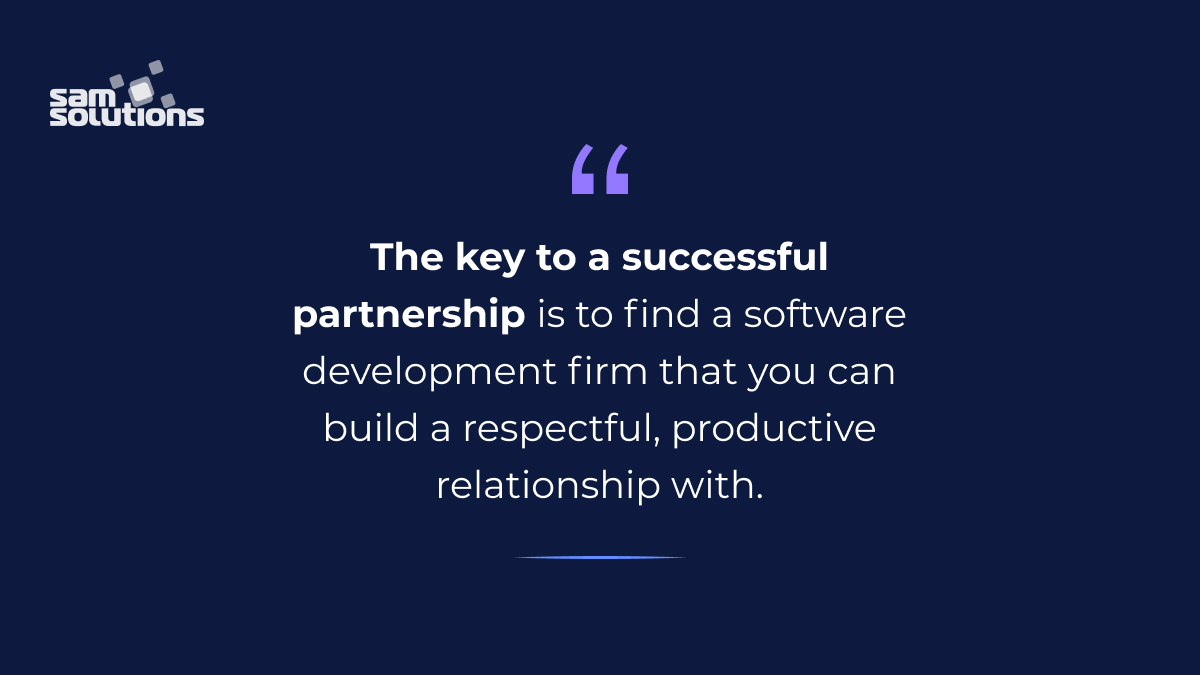
Finally, before you set off in search of the ideal software development partner for your business, it’s crucial to set your priorities. As with many tasks, the most pain-free way to do that is to learn from the successes and failures of others; to help, we’ve compiled this brief list of lessons learned:
Don’t just select the lowest bidder. Choosing the lowest-priced outsourcing partner without considering skill set and dedication often means sacrificing quality for cost. When outsourcing software development services, don’t compromise your rollout goals to save a few dollars.
Don’t neglect to share clear, quantitative goals. It’s well worth mentioning again—your outsourcing partner needs clearly outlined goals for your partnership. Otherwise, the software implementation experience could be just as ill-defined and weak as your reasoning for embarking upon it.
Don’t let communication become a barrier. While time zones, language, and culture can certainly work to impede effective communication between you and your potential partner, the vast majority of outsourcing partners communicate very effectively. During the process of outsourcing software development services, it’s important to use clear, upfront communication with all parties involved, not just the outsourcing team.
Don’t ignore the importance of cultural fit. Whether you’re offshoring, nearshoring, or finding a local partner, cultural fit refers to the degree to which your prospective partner can adhere to your business culture and vice versa. Outsourcing software development services with a firm that you can build a respectful, productive relationship with is key to a successful partnership.
Why Choose SaM Solutions?
SaM Solutions is a leader in software development, with over 30 years in the field. As a global, enterprise-level partner, we have developed multiple teams of experts worldwide in several fields, including Custom software engineering, Mobile apps development, IoT, Embedded software and eCommerce. We’ve leveraged these skills and competencies to serve a broad spectrum of multinational corporations.
SaM Solutions is a Gold Microsoft Partner and SAP Silver Partner, as well as a trusted partner of Oracle, Coveo, Toradex, and FPX. Our team understands the importance of data security and maintaining the confidentiality of information for all our customers and internal environments. Our processes are compliant with both ISO 9001 and ISO/IEC 27001 standards.
Some of our trusted clients include SAP, Fujitsu, Siemens, European Patent Office, the Instant Group, and many more. For more information about outsourcing software development services with SaM Solutions, reach out today.
